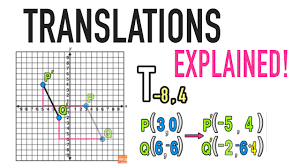Exploring the Expanding Capabilities of Artificial Intelligence
The realm of artificial intelligence (AI) has seen exponential growth in recent years, transforming industries and revolutionizing how daily tasks are performed. AI capabilities have evolved from simple automated responses to complex problem-solving abilities that rival human cognition. This article delves into the current state and potential future of AI’s expanding capabilities.
Machine Learning and Deep Learning
At the core of AI’s evolution is machine learning, a subset of AI that enables computers to learn from data without being explicitly programmed. Machine learning algorithms use statistical methods to enable machines to improve at tasks with experience.
Deep learning, a more advanced subset of machine learning, uses neural networks with many layers (hence “deep”) to analyze vast amounts of data. These neural networks mimic the human brain’s structure and function, allowing machines to recognize patterns and make decisions with minimal human intervention.
Natural Language Processing
Natural language processing (NLP) is another significant advancement in AI capabilities. NLP allows machines to understand and respond to human language in a way that is both meaningful and contextually relevant. This technology powers virtual assistants like Siri and Alexa, translation services, and chatbots that provide customer support or health advice.
Computer Vision
Computer vision gives machines the ability to interpret visual information from the world around them. This capability has led to breakthroughs in facial recognition technology, medical imaging analysis, autonomous vehicles, and even agriculture where it aids in crop analysis for better yield predictions.
Robotics
Robotics combined with AI has given rise to robots capable of performing complex tasks that were once thought only possible for humans. From manufacturing assembly lines to delicate surgical procedures, robots are increasingly becoming our collaborators in various fields.
Predictive Analytics
Predictive analytics uses data mining, predictive modeling, and machine learning to identify patterns and predict future outcomes. It’s used extensively in finance for fraud detection, marketing for customer behavior prediction, and by meteorologists for more accurate weather forecasting.
Ethical AI
As AI becomes more integrated into society’s fabric, ethical considerations are being brought into focus. Issues such as privacy concerns, bias in decision-making processes due to flawed data sets, and the impact on employment require ongoing dialogue between technologists, ethicists, policymakers, and the public at large.
The Future Landscape of AI Capabilities
The future landscape of AI is poised for even greater advancements as researchers continue pushing the boundaries of what’s possible. Quantum computing could further expand AI capabilities by performing complex calculations at unprecedented speeds. Continued advancements could lead us into an era where personalized medicine based on genetic analysis becomes routine or where environmental challenges are mitigated through predictive modeling on a global scale.
In conclusion,
“The potential applications for artificial intelligence are as vast as the imagination itself.”
This statement encapsulates the trajectory of AI capabilities—from enhancing mundane tasks with automation to tackling some of humanity’s most pressing challenges through intelligent innovation.
Exploring the Breadth of AI: Capabilities, Types, and Aspects – A Comprehensive Guide to Artificial Intelligence
- What are three capabilities of AI?
- What is the most capable AI?
- How many types of AI are capabilities?
- What is AI capable of today?
- What are the capabilities of artificial general intelligence?
- What are the 4 types of AI?
- What are the 7 aspects of AI?
What are three capabilities of AI?
Three notable capabilities of AI include its ability to process and analyze large volumes of data rapidly through machine learning, understand and interact using human language via natural language processing (NLP), and recognize as well as interpret visual content through computer vision. Machine learning algorithms empower AI to identify patterns, make predictions, and improve its performance over time without direct human guidance. Natural language processing enables AI to comprehend spoken or written language, facilitating engaging interactions with users in a conversational manner. Lastly, computer vision allows AI to decipher images and videos, which can be applied in various applications such as facial recognition systems, autonomous vehicles, and medical diagnostics.
What is the most capable AI?
The question of the “most capable AI” often leads to a discussion about the most advanced systems in the field, such as OpenAI’s GPT-3 or DeepMind’s AlphaFold. GPT-3, known for its impressive language processing abilities, can generate human-like text, translate languages, answer questions, and more. On the other hand, AlphaFold has made significant strides in solving complex biological problems by predicting protein folding structures with remarkable accuracy—a breakthrough that could have far-reaching implications in medical research and drug discovery. The capability of an AI system is typically measured by its performance in specific tasks; therefore, the “most capable” AI would depend on the context of its application and the complexity of challenges it can successfully address.
How many types of AI are capabilities?
When discussing the capabilities of artificial intelligence (AI), it’s common to categorize them into different types or stages based on their complexity and functionality. Broadly speaking, AI can be classified into three main types: narrow or weak AI, general or strong AI, and artificial superintelligence. Narrow AI refers to systems designed to perform specific tasks, such as voice assistants or image recognition software, and is currently the most prevalent form of AI. General AI encompasses machines that possess the ability to understand and learn any intellectual task that a human being can, a milestone yet to be achieved. Lastly, artificial superintelligence represents a hypothetical future where AI surpasses human intelligence across all domains—an area that remains in the realm of science fiction for now.
What is AI capable of today?
Today’s AI is capable of a remarkable range of tasks that were once the exclusive domain of human intelligence. It can analyze and interpret vast amounts of data far more quickly than a human could, leading to advancements in fields as diverse as healthcare, where it aids in diagnosing diseases, to finance, where it can detect fraudulent transactions with high accuracy. AI systems excel at pattern recognition, enabling them to make predictions in areas like consumer behavior and market trends. They can interact with people through natural language processing, providing customer service or personal assistance, and even create art or write articles. Autonomous technology powers vehicles and drones, while robotics equipped with AI performs complex manufacturing tasks and delicate surgeries. Although AI’s capabilities are vast and continue to expand, they are still guided by human input and programming at their core.
What are the capabilities of artificial general intelligence?
Artificial General Intelligence (AGI), often referred to as “strong AI,” is the hypothetical ability of an AI system to understand, learn, and apply knowledge in a way that is indistinguishable from human intelligence. AGI would be capable of reasoning, problem-solving, and abstract thinking across diverse domains, adapting to new tasks with ease and performing any intellectual task that a human being can. Unlike narrow AI, which is designed for specific tasks, AGI encompasses a broad spectrum of cognitive abilities allowing it to seamlessly transfer knowledge between contexts and handle complex situations that require nuanced understanding. While AGI remains largely theoretical at this point in time, its potential capabilities are a subject of significant interest and research within the field of AI.
What are the 4 types of AI?
When discussing artificial intelligence, it’s common to categorize AI into four types based on functionality and sophistication. The first type is Reactive Machines, which are the simplest form of AI and are designed to respond to specific inputs with specific outputs, without any memory or data from past experiences. Famous examples include IBM’s Deep Blue, which defeated chess grandmaster Garry Kasparov. Next is Limited Memory AI, which can make decisions by considering historical data, as seen in autonomous vehicles that adjust their actions based on observed traffic patterns. The third type is Theory of Mind AI, a more advanced class that understands emotions, people, and other agents in the environment; however, this type of AI is still largely theoretical and not fully realized. Finally, there’s Self-Aware AI, which represents an autonomous entity with its own consciousness, self-awareness, and sentience—this form of AI exists mainly in science fiction and represents the pinnacle of AI development.
What are the 7 aspects of AI?
When discussing the multifaceted nature of artificial intelligence, it is common to break down AI capabilities into seven key aspects that showcase its breadth and depth. These aspects include: Machine Learning, where AI systems learn from data to improve their performance over time; Natural Language Processing, enabling machines to understand and communicate in human language; Robotics, which combines AI with physical devices to perform tasks; Expert Systems, designed to make decisions in specialized fields based on a set of rules; Vision, allowing machines to interpret and act upon visual data; Speech Recognition, giving AI the ability to understand spoken words and phrases; and lastly, Planning and Navigation, which involves AI mapping out actions or routes based on various inputs. Together, these aspects represent the comprehensive capabilities of AI systems in mimicking, complementing, and enhancing human abilities.




